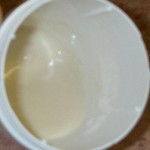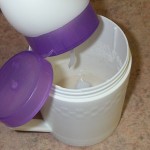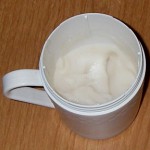My daughter has had eczema since birth. I have never been able to pinpoint the root cause and I’m happy that she’s finally outgrowing it. Over the course of her past 17 months, we have tried many remedies, both natural and prescribed, with mixed results but one thing that has always worked for continuous relief was the oatmeal bath treatments and lotions.
For bath time, instead of using the expensive prepackaged colloidal oatmeal packets, I use oat flour from the bulk bin section at our grocery store. It is the same ingredient. ‘Colloidal’ just means that the oat flour particles are extremely fine so that it will stay dispersed in the bath water longer before settling to the bottom. The oat flour is not as fine but still works great for baths. In fact, because of its slight coarseness, it acts as a very mild and gentle scrubber to clean the rest of her body where I don’t use soap.
I still purchase the generic colloidal oatmeal and use it to make lotion. After trying to grind rolled oats and even oat flour with a Vita-mix, I’ve concluded that it’s not energy efficient and I can’t even get the particles as fine as those bath treatment’s colloidal oatmeal.
To make oatmeal lotion, scoop or shake the colloidal oatmeal right into the container you’re going to store the lotion. Add and blend in just enough hot water to make a sticky, glue-like paste. Add pre-made lotion. I typically don’t measure and just eyeball the quantities but in general, I use 1 part oatmeal/water mixture to 3 parts lotion, by volume. Make small 2 – 4 fl oz batches at a time since the oatmeal paste significantly reduces the shelf life to 2 – 3 days unrefrigerated. I also don’t store it in a bottle since it’s a pain to wash frequently. A wide mouth jar, dredge, or stainless steel creamer with or without a lid are ideal.




2 Comments